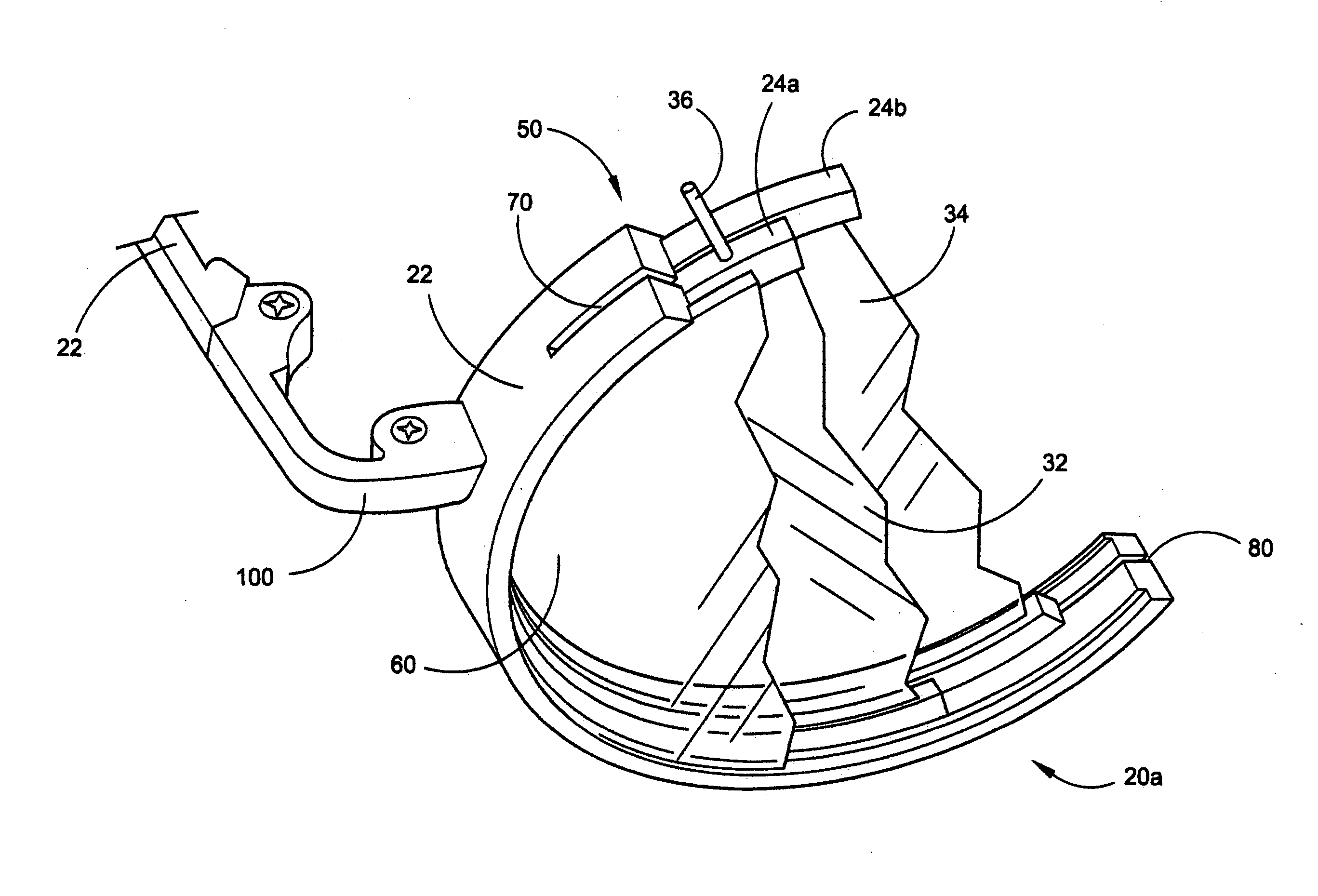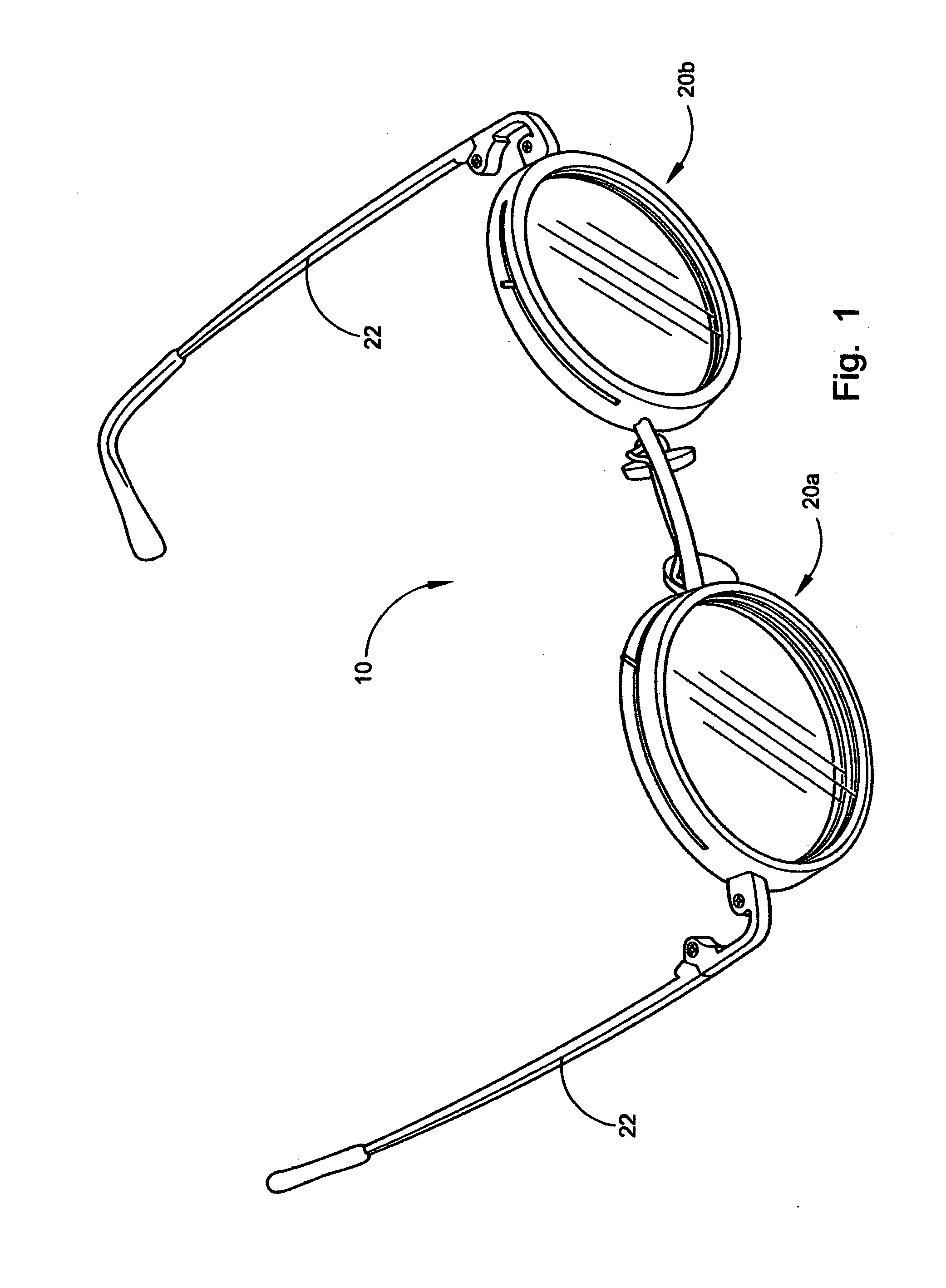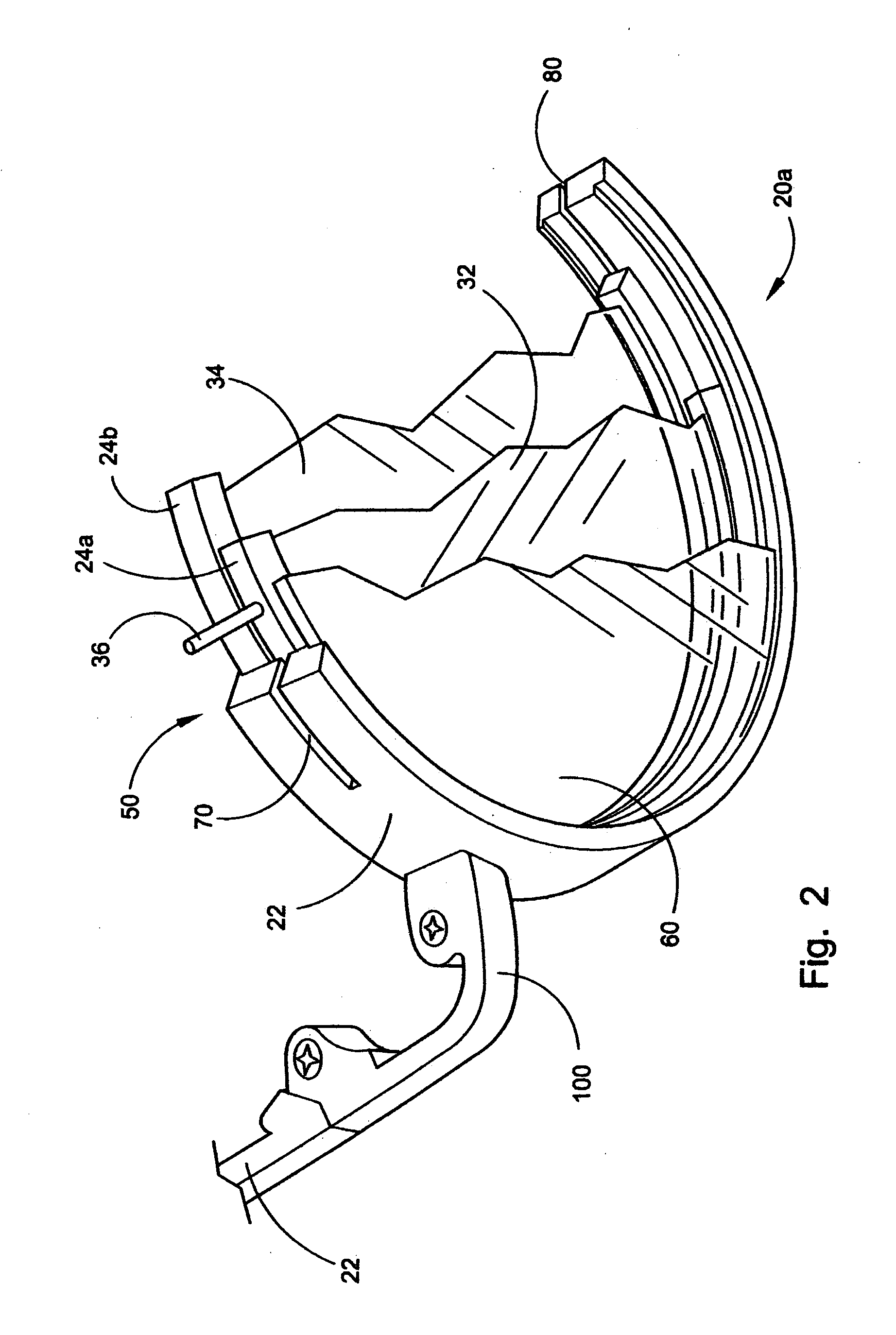Variable Prism Eyeglasses and Method of Making Same
a prism and eyeglass technology, applied in the field of eyeglass devices, can solve the problems of fatigue in the muscle system when used continuously, fatigue, too show fatigue, etc., and achieve the effects of eliminating frustration, reducing the level of refraction, and eliminating the patient's double vision
- Summary
- Abstract
- Description
- Claims
- Application Information
AI Technical Summary
Benefits of technology
Problems solved by technology
Method used
Image
Examples
Embodiment Construction
[0026]The above-mentioned difficulties and problems are overcome by the present invention. The present invention of variable prisms is intended to be installed in an eyeglass frame. The eyeglasses are typically, and preferably, comprised of a total of six lenses, three devoted to each eye. Two of the lenses, one for each eye, are standard prescription corrective lenses that the patient would use to correct vision clarity. These two lenses are fixed in place. The four lenses that are novel to the invention are prisms.
[0027]The purpose of the Variable Prism Glasses (VPG) is to correct Strabismus. As light passes through the VPG it is refracted to match the patient's degree of Strabismus. Because the degree of Strabismus varies throughout the day, the VPG can be adjusted to meet the patient's fluctuating needs. The ability of the invention to change its refractive properties to meet the needs of the patient are described herein.
[0028]Referring first to FIG. 1, a perspective view of a p...
PUM
 Login to View More
Login to View More Abstract
Description
Claims
Application Information
 Login to View More
Login to View More - R&D
- Intellectual Property
- Life Sciences
- Materials
- Tech Scout
- Unparalleled Data Quality
- Higher Quality Content
- 60% Fewer Hallucinations
Browse by: Latest US Patents, China's latest patents, Technical Efficacy Thesaurus, Application Domain, Technology Topic, Popular Technical Reports.
© 2025 PatSnap. All rights reserved.Legal|Privacy policy|Modern Slavery Act Transparency Statement|Sitemap|About US| Contact US: help@patsnap.com



